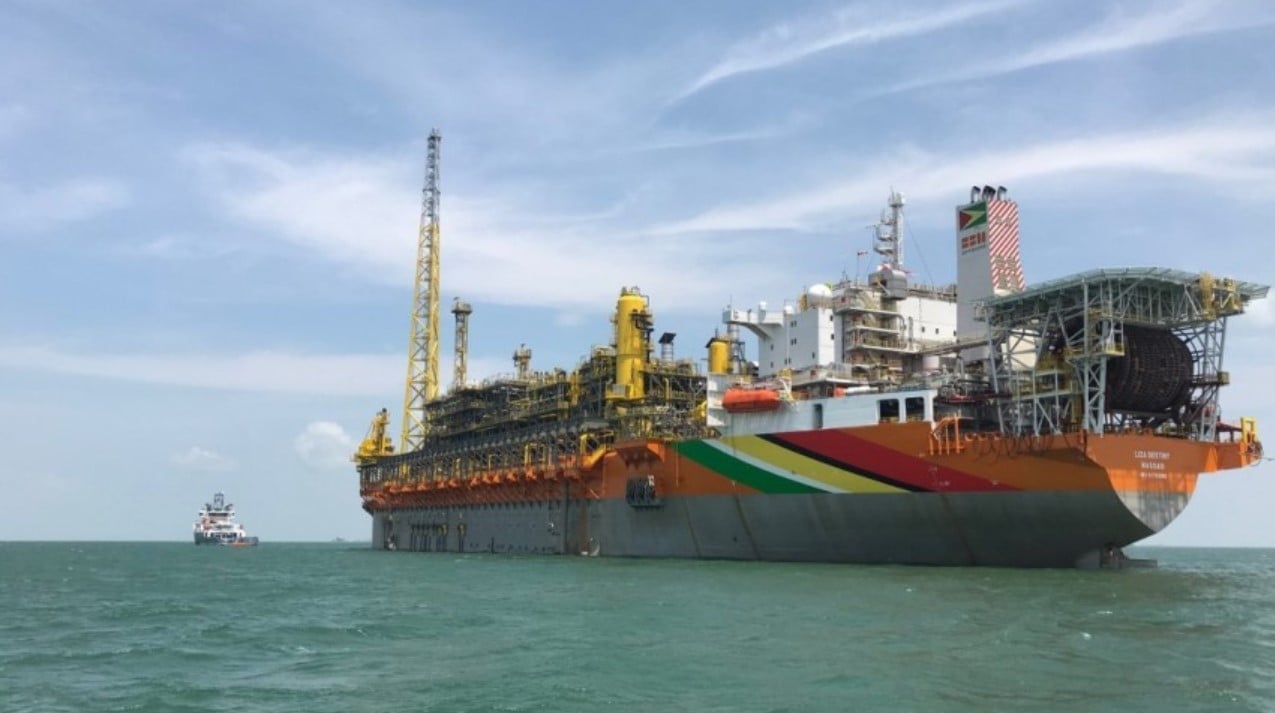The ExxonMobil-led consortium generated US$5.8 billion in profits in 2022 from oil production in Guyana.
The disclosure of the profits of the alliance – which includes Exxon Mobil, Hess and Sinooc – came in light of the legal dispute over the breach of insurance obligations against oil spill risks.
It is also the first disclosure of the profits of the 3 companies from oil production in Guyana, which it started in 2019, and represents all of the country’s oil production, according to information seen by the specialized energy platform, according to Reuters.
The financial results were presented on May 17, 2023, in an appeal of a judgment issued earlier this month, which found that the group had breached the oil spill insurance obligations of the Lisa One offshore platform.
Oil production gains in Guyana
Last year (2022), ExxonMobil received $2.74 billion for its stake in the alliance’s offshore oil production, Hess received $1.53 billion, and SINOC received $1.55 billion, according to the financials.
The alliance was producing about 375,000 barrels of oil per day from two naval vessels by the end of 2022; It plans to pump 1.2 million barrels per day in 2027.
The financial statement of the audit group in Guyana, “TSD Lal & Co”, showed that ExxonMobil incurred about $ 281 million in tax expenses in the country last year (2022), compared to nothing in 2020.
In total, the alliance has about $19 billion in assets in Guyana.
ExxonMobil’s assets in the country at the end of the year were $10.76 billion, Hess’s $4.28 billion, and SinoC’s assets $3.9 billion, according to the filing.
Guyana oil production violations
A court in Guyana has ruled that ExxonMobil breached the insurance obligations of the Lisa One platform, its first offshore oil project, and required additional insurance sufficient to protect against the risk of a catastrophic oil spill.
The court set June 10, 2023 as the deadline for the group to provide the authorities with an unspecified liability agreement.
The Lisa One platform – which opened oil production in Guyana in 2019 – has an environmental clearance that requires two forms of insurance coverage, one from the affiliate of $600 million in the event of an oil spill, and the other a master guarantee that is obligated to cover all costs in excess of the $600 mark. Million dollars.
The offshore ship pumps more than 155,000 barrels of oil per day.
Guyana will incur losses of between $80 and $88 million in earnings per share of production, according to the country’s latest quarterly report from the country’s National Resources Fund.
The following graph – prepared by the specialized energy platform – shows the developments of oil production in Guyana since 2019:
Oil stoppage losses in Guyana
For his part, ExxonMobil Regional Director Alistair Routledge said, in the appeal, that ExxonMobil and its partners “have the technical and financial capabilities to respond positively to any adverse event.”
Rutledge explained that the group has techniques to mitigate the spill and reduce any major oil spill, and any underwater explosion can be stopped within 5 days to half a day.
Exxon Mobil officials said – in a media statement – that the American company and its alliance partners have insurance worth $ 600 million, and assets amounting to $ 19 billion in the country.
ExxonMobil indicated that if the two sides could not agree, it could stop production from the Lisa One platform and cost about $350 million in lost revenue, according to Reuters.
Boost production with a new floating vessel
In a related context, ExxonMobil and Hess had revealed, on Thursday (27 April), the final investment decision to move forward in Oaru, the fifth development in the Stabroek square.
The production capacity of this project will reach approximately 250,000 barrels per day of oil, and production is scheduled to start in 2026, according to information seen by the specialized energy platform, quoting the Offshore Energy platform.
ExxonMobil submitted a plan to develop Oaro to the Government of Guyana in 2022 for approval, and has now received government approval.
According to Hess, the $12.7 billion Aaro development will target an estimated resource base of more than 800 million barrels of oil and include up to 10 drilling centers and 44 production and injection wells.
Japan’s Modic has been awarded the engineering design contract for Aaro’s floating production, storage and offloading unit and is building it under an EPC contract.
The floating production, storage and offloading unit will be able to produce 250,000 barrels per day of oil, and will have an associated gas processing capacity of 540 million cubic feet per day, and a water injection capacity of 350,000 barrels per day.
related topics..
Also read..

Leave a Reply